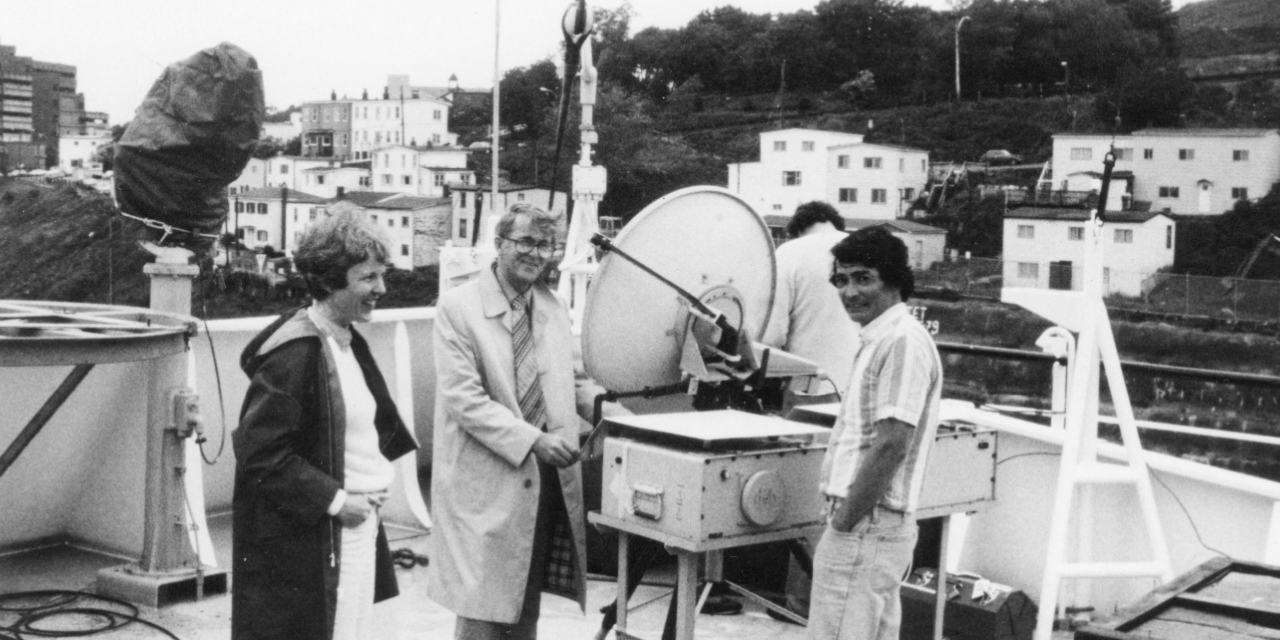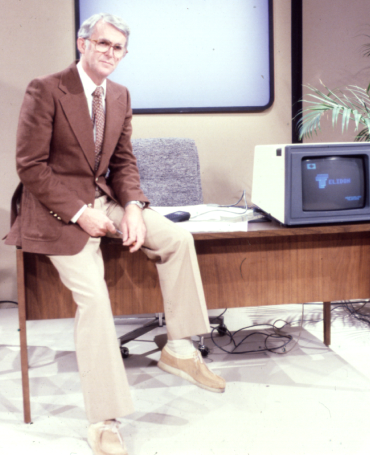A health-care revolution
Government officials in Ottawa tested their microphones. University and medical professionals across Newfoundland and Labrador took their places. Camera operators readied their equipment. And a series of television monitors sprang to life.
They were suddenly all connected.
At 3:30 in the afternoon on April 7, 1977, a closed-circuit satellite hookup linked representatives in eight different locations together in real time. Memorial University’s Telemedicine Project was officially launched.
The live conference demonstrated how telemedicine could be used to connect hospitals across the province to the expertise at Memorial’s Faculty of Medicine.
One of the driving forces behind the Telemedicine Project was Dr. Arthur Maxwell House, whose lifelong commitment to health care and continuing education would make Memorial a world leader in telehealth.
Dr. House was born in Glovertown in 1926. He grew up during the Great Depression and attended a two-room high school.
His first introduction to distance education occurred when he took accounting and bookkeeping courses through the mail to help with his parents’ small business.
After completing the premedical program at Memorial University College in 1947, Dr. House finished his first medical degrees at Dalhousie in 1952. He then moved to Baie Verte, N.L., as a general practitioner and served outport communities around the peninsula.
He made his rounds to these rural areas in all seasons and all weather, travelling by foot, bike, boat, dog team, snowmobile and bush plane.
With his first-hand knowledge of the need for quality health care in remote areas, he would later meet the challenges of geography head on with cutting-edge technology.
Dr. House did post-graduate training in psychiatry at Dalhousie and then specialized in neurology at McGill. When he returned to St. John’s in 1960, he was the only neurologist in the province. On the move again, he travelled to support clinics in Gander, Grand Falls and Corner Brook.
He played an integral role in the development of Memorial’s Faculty of Medicine and in 1968 was named director of continuing medical education.
Dr. House’s list of accomplishments as a doctor, teacher, researcher and administrator is staggering. But he is probably most remembered for his work with the Telemedicine Project.

Dr. Arthur Maxwell House (centre) with the Anik B ground terminal in 1980. Anik B was the second satellite used by the Telemedicine Project. Photo from Memorial University Archives.
Telemedicine at Memorial became one of the largest and most successful projects of its kind in the world.
Today, this kind of video conferencing can be accomplished with a few clicks on a smartphone.
But in the late 1970s, the Telemedicine Project required the resources of Memorial’s Educational Television Centre, collaboration with NASA and a direct link to the Hermes satellite, the single most powerful transmitter orbiting our planet at that time.
The project’s success meant that Dr. House was on the road once more. But now he was travelling the globe to teach and promote the advantages of telehealth.
Aside from enhancing communications between hospitals in Newfoundland and Labrador, Memorial used this cost-effective technology to deliver health care to developing countries. The university also adapted Dr. House’s innovations to deliver continuing education in numerous disciplines to people across the province.
Dr. House retired from Memorial’s full-time faculty in 1993. He became Newfoundland and Labrador’s tenth lieutenant-governor in 1997.
Dr. House worked with numerous teams across the university to bring telemedicine to life, and he was always reluctant to be singled out for its success.
But his rural background and concern for the health and welfare of people around the world reminds us of one important lesson: sometimes our biggest and furthest-reaching ideas start small.
